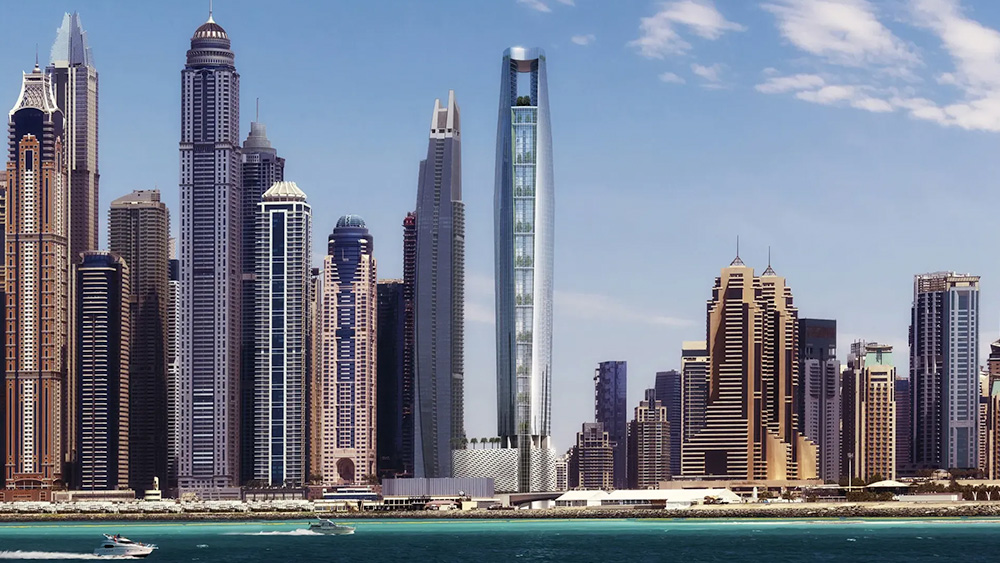6 Construction Tech Trends to Watch in 2017
- Youtube Views 33,244 VIDEO VIEWS
Video hosted by Tom Payne.
TECHNOLOGY is fast-changing the world we live in and construction is by no means immune to that.
Recent advancements have seen many tech innovations that started out as novelties or gimmicks quickly find their way to practical applications in the built environment sector. Here we look at six key areas to keep your eyes on in 2017.
WEARABLE TECH
First-up is wearable tech. This of course includes things like smart watches that put the myriad of apps already used by some parts of the industry onto the arms of professionals and operatives alike.
Such devices have also been trailed in monitoring the location of persons on site, taking roll calls and in checking the body temperature and heart rate of those operating plant and machinery.
Wearable tech also extends to new devices like DAQRI’s Smart Helmet, bringing augmented reality (AR) into the field. We’ll look at what that means, together with virtual reality (VR) a little later on.

Above: DAQRI's new Smart Helmet is an example of wearable tech entering the construction sector (image courtesy of DAQRI).
ROBOTICS
The field of robotics is seemingly viewed with a mixture of intrigue, scepticism and excitement across the construction sector. Its successful application has the potential to enhance efficiency and safety in many instances, making it a highly-attractive prize for those that see the value.
Whilst the demolition trades have been using robotic kit for some time, recent trials have seen the technology move into bricklaying, track-laying and product manufacturing.

Above: A mobile drilling robot developed by NLINK and Below: A prototype tiling robot by Future Cities Laboratory (images courtesy of NLINK [above] and Future Cities Laboratory [below]).

There’s also increasing interest in automated plant; unmanned machinery that can work around the clock, taking its lead from GPS co-ordinates, survey data and digital design information.
Robotics has the potential to be extremely disruptive, challenging the fundamentals of site labour needs and pushing new levels of quality assurance. The challenge for this area remains the entry-cost and a serious recognition of its applications; many still see the concept as science fiction.
INTERNET OF THINGS
The broad category of internet of things (IoT) includes smart houses that allow us to remotely control temperature and optimise energy performance; domestic scale tools that some of our viewers and readers will already be familiar with.
"Many tech innovations that started out as novelties or gimmicks are quickly finding their way to practical applications in the built environment sector"
The arguably greater prize is “big data”; the ability to hone and perfect the built environment that we construct and operate by having an aggregate, trend-level view of how it is performing. Such data can be obtained from building management systems or sensor nodes integrated within built assets.
This area is closely linked to what many understand as “BIM Level 3” though the exact parameters and definition of that term are still under development.

Above: Big data can provide an aggregate, trend-level view of how our built environment is performing.
VIRTUAL + AUGMENTED REALITY
The use of virtual reality – or VR – is exploding in the construction sector, quickly moving from being gimmick into a valuable tool for project teams and end users alike.
VR creates an immersive environment in a headset or cardboard viewer, or even an enveloping 360 pop-up tent or room. Its key applications to date include health and safety training and stakeholder engagement.

Above: A virtual reality (VR) headset in use.
Stepping back from the fully immersive experience, augmented reality – AR – applies a graphic layer to our real-world view. It is thought this could lead into overlays of data for site personnel, bringing them everything they need from construction-issue information and specifications, to statistics on productivity and health and safety warnings.
UAVs
The rise of unmanned aerial vehicles (UAVs) – often referred to as drones – has been well publicised in the construction industry. Again what perhaps felt like a gimmick-technology in the first instance is steadily maturing into practical application.
UAVs have been used for health and safety inspections, progress reporting and most-prominently in site surveying; capturing accurate data on large areas in just a few minutes and accessing potentially hazardous zones with ease, keeping surveyors themselves save. There's even a use for construction video channels like The B1M, as seen in our "project="" capella="" <="" a="">
project="" capella="" <="" a="">
project="" capella="" <="" a="">
Above: An Aibotix UAV (image courtesy of Aibotix and Leica Geosystems)
The ability to 3D print physical objects is impacting construction at both ends of the scale. Accurate digital design information allows 3D printing to be used for everything from rapid prototyping, component manufacture and scale modelling, to full scale printing of excavator cabs and the concrete printing of entire structures.

Above: A 3D printer in action.
If you’re reading this article or watching the video 10 years from now… we hope you found it funny.
WATCH NEXT: TOP 5 TECH-GIANT CONSTRUCTION PROJECTS
This video was kindly powered by Viewpoint. Images and footage courtesy of Aibotix / Leica Geosystems, Business Wire, DAQRI, University of Illinois at Urbana-Champaign, Techviz and Wall Street Journal.
We welcome you sharing our content to inspire others, but please be nice and play by our rules.
Comments
NEXT
Next up





